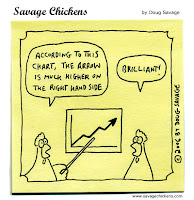•02:41
TYPE OF INFORMATION SYSTEM OR IS
 - DSS is an organized collection of
people, procedures, software, databases and devices used to support
problem-specific decision making.
- DSS is an organized collection of
people, procedures, software, databases and devices used to support
problem-specific decision making.
EXPERT SYSTEM (ES)
 1.
A user interface - This is the system that allows a non-expert
user to query (question) the expert system, and
to receive advice. The user-interface is designed to be a simple to
use as possible.
1.
A user interface - This is the system that allows a non-expert
user to query (question) the expert system, and
to receive advice. The user-interface is designed to be a simple to
use as possible.
To conclude, there are so many system under the information system. What I have learned is the differences between each system, how they are related with each other. Furthermore, the way to get the useful output from those system in strengthening decision. Nevertheless, I hope all the readers will get more understanding from this post.
Information System is a big area
system which includes many subgroups. In order to know efficiently, we should
concern about types of IS. In the same time, we will further know information
about IS from a particular system. Definitely, it is very complicated to
understand, but it could be covered by our ability. Here we go through one by
one.
- IS includes two big systems, which
contain Management Support System that supports management decision-making and
Operation Support System that supports business operation.
- Flow of information between
management levels
TRANSACTION PROCESSING SYSTEM (TPS)
- TPS is the system records the data
from everyday operations throughout every department in the organization. Each
department is connected through the TPS to provide useful information to
management levels throughout the company.
- Features of TPS
1.
One TPS for one department.
2. Used by operational and
supervisory levels.
3. Monitor, collect, store and
process data generated from Business Trend.
4. TPS is the backbone of an
organization's IS.
- There are three components for
TPS. they are people, hardware and software.
-
TPS function
MANAGEMENT INFORMATION SYSTEM (MIS)
- MIS is an integrated collection of
people, procedures, databases and devices that provide managers and decision
makers with information to help organization achieve goals.
- The function of MIS is proving
managers with information about operations of the organization. So that they
can control, organize, and plan more effective.
DECISION SUPPORT SYSTEM (DSS)
 - DSS is an organized collection of
people, procedures, software, databases and devices used to support
problem-specific decision making.
- DSS is an organized collection of
people, procedures, software, databases and devices used to support
problem-specific decision making.
- DSS provides a flexible tool for
analysis.
- Features of DSS
1. Internal and external input
2. Support unstructured problems
3.
Handle large amounts of data from different sources
4. Tactical manager or middle
manager
- DSS consists four parts. they are
users, software, decision model and data.
EXECUTIVE SUPPORT SYSTEM (ESS) or EXECUTIVE
INFORMATION SYSTEM (EIS)
- Features of EIS
1. Top managers or executives
2. Support higher level of decision
making in organization.
3. Analyze the environment and
identify long-term trends.
EXPERT SYSTEM (ES)
- An expert system is computer software that
attempts to act like a human expert on a particular subject
area.
- An expert system is made up of
three parts:
 1.
A user interface - This is the system that allows a non-expert
user to query (question) the expert system, and
to receive advice. The user-interface is designed to be a simple to
use as possible.
1.
A user interface - This is the system that allows a non-expert
user to query (question) the expert system, and
to receive advice. The user-interface is designed to be a simple to
use as possible.
2.
A knowledge base - This is a collection of facts and
rules. The knowledge base is created from information provided
by human experts
3.An inference
engine - This acts rather like a search engine, examining
the knowledge base for information that matches the
user's query.
To conclude, there are so many system under the information system. What I have learned is the differences between each system, how they are related with each other. Furthermore, the way to get the useful output from those system in strengthening decision. Nevertheless, I hope all the readers will get more understanding from this post.
























